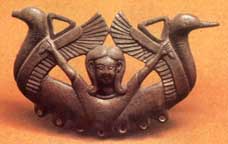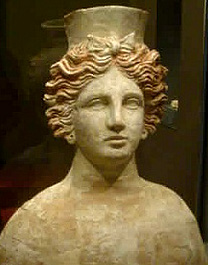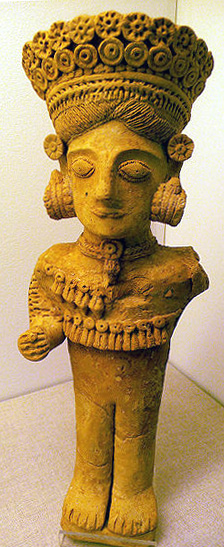Astarte
in southern Spain
This bronze, like so much Canaanite art, shows clear Egyptian influence. The base bears a Phoenician inscription to Astarte of the Cave. Her wooden throne has disintegrated.
Phoenician colonists brought Astarte
and Tanit with them to Iberia.A great temple of Astarte stood at
the northern end of the Cádiz peninsula,
and another to the god Melqart was
built at the southern tip. Today both
temples are submerged in the Atlantic.
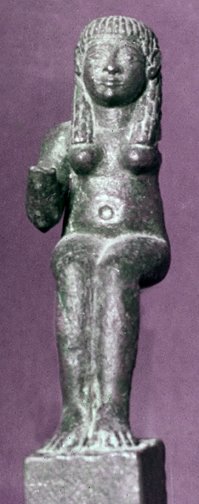
Ashtart of Galera
Necropolis of Tutugí, Granada
She is carved of alabaster, flanked by
woman-headed sphinxes. Libations were poured through a hollow in her head and streamed out of her breasts into the bowl in her hands. The goddess is of Phoenician workmanship, and dates to the early 7th century bce. She was found in a burial in the great mound of Tutugi, one of the largest in Spain. Beyond this mound, the necropolis
contained 130 other large tombs.
The sculpture is older than the tomb,
which dates to about 450 bce, and so was
probably a treasured family heirloom.
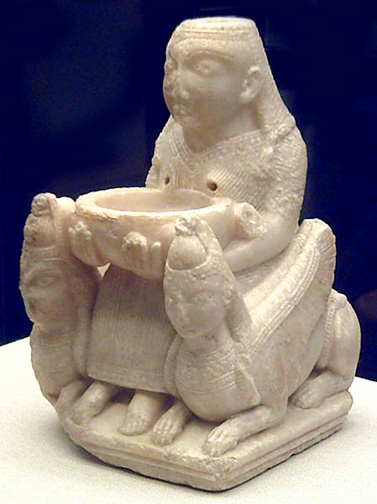
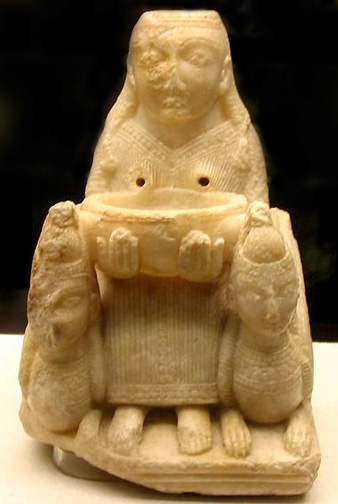 .
.Left: frontal view of the Lady of Galera.
There is no inscription, but most scholars
think she represents the Phoenician goddess
Tanit or Ashtart.
Below: a Hathor-headed Ashtart shaking sistra with two waterbirds.
Bronze from Carranzo, Spain.
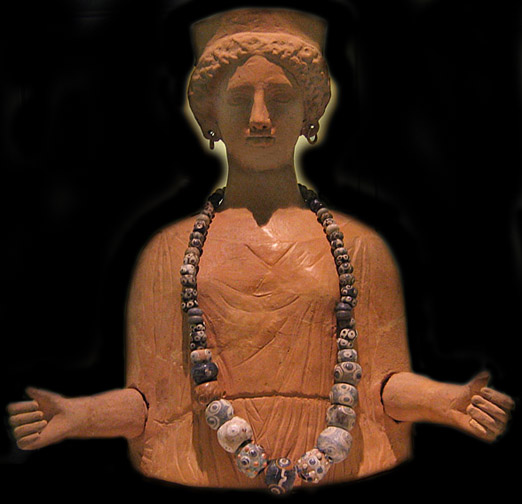
Another head of Tanit in Greek style
from Ibiza
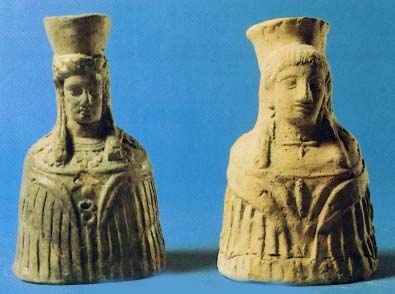
Two of the hundreds of clay figurines offered to Tanit
at the sacred cave of Es-Cuieram, Ibiza ....See more like these
Jug from Enserune shows Phoenician and North African influences. Circa 400 bce.
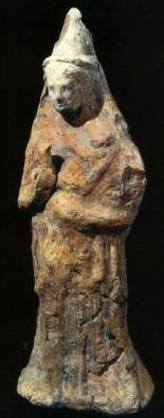
Terracotta figurine fusing Greek style with Iberian dress. The mold-made head was attached to a handmade torso.
Tossal de Manises, Alicante.

Another figurine from
Puig des Molins, Ibiza
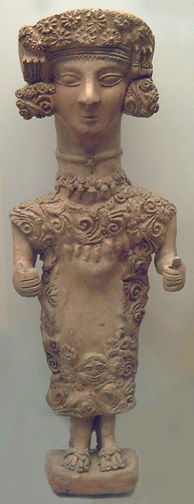
Goddesses from Puig des Molins necropolis, Ibiza
Near left: La Dama de Ibiza, widely considered to represent the Carthaginian goddess Tanit.
Another unusual fusion of styles,
with flower-adorned headdress, necklaces, and a spiralled dress
with a Gorgon head near the hem.
Molded terracotta, 3rd century bce,
Puig des Molins.
Far left: A characteristically Iberian statuette, wearing rodetes suspended beside her ears and a robust floral headdress.
